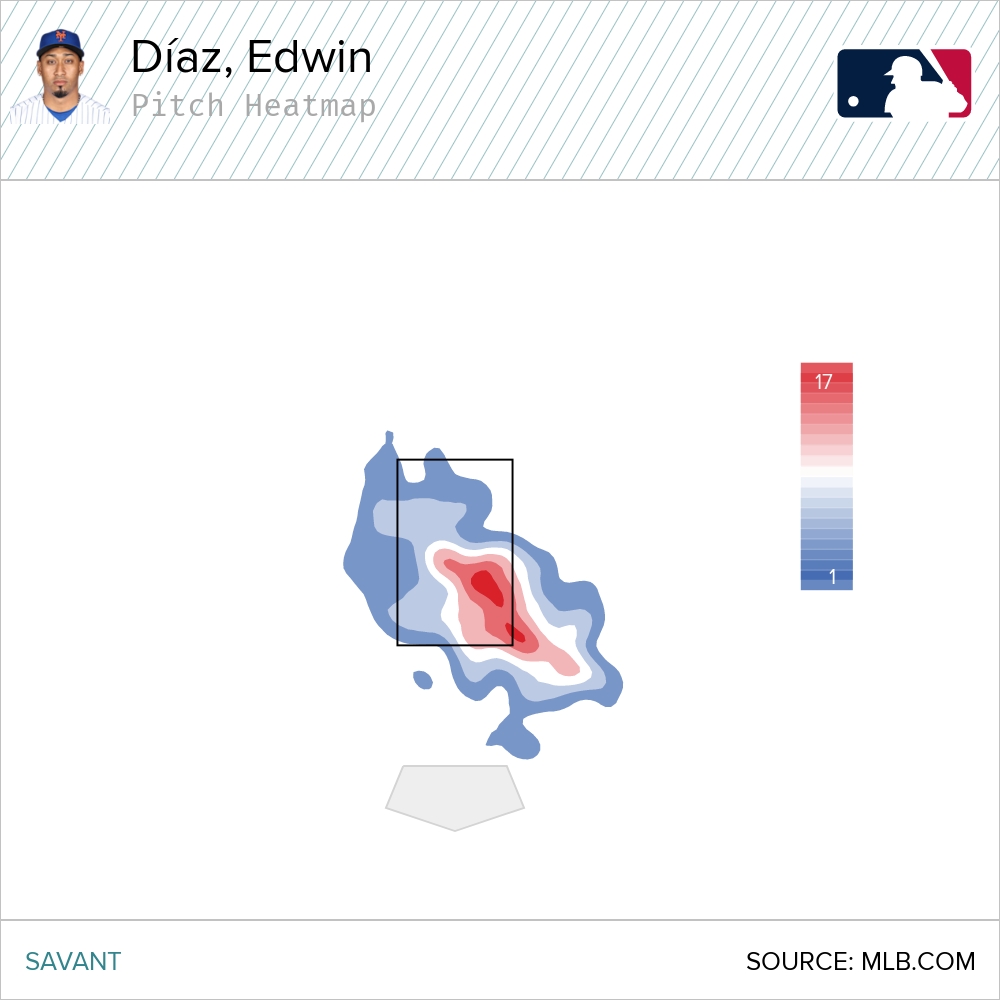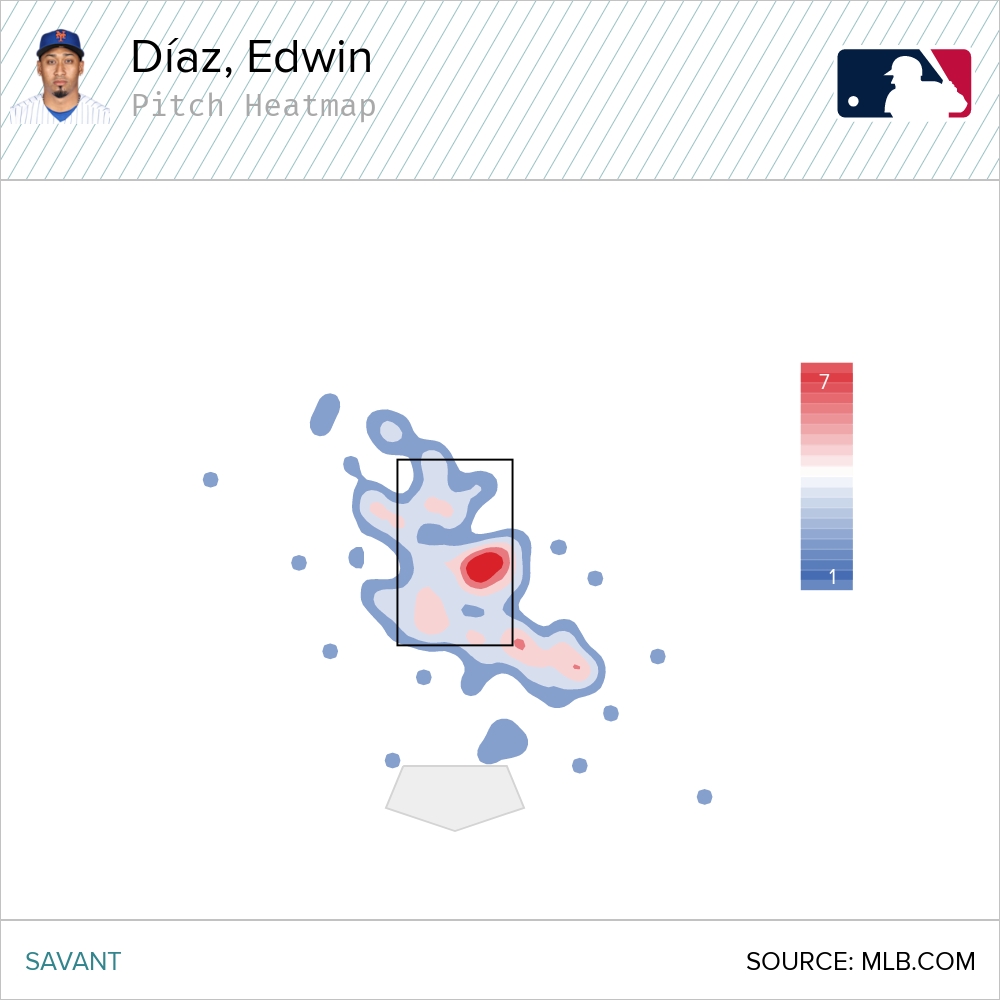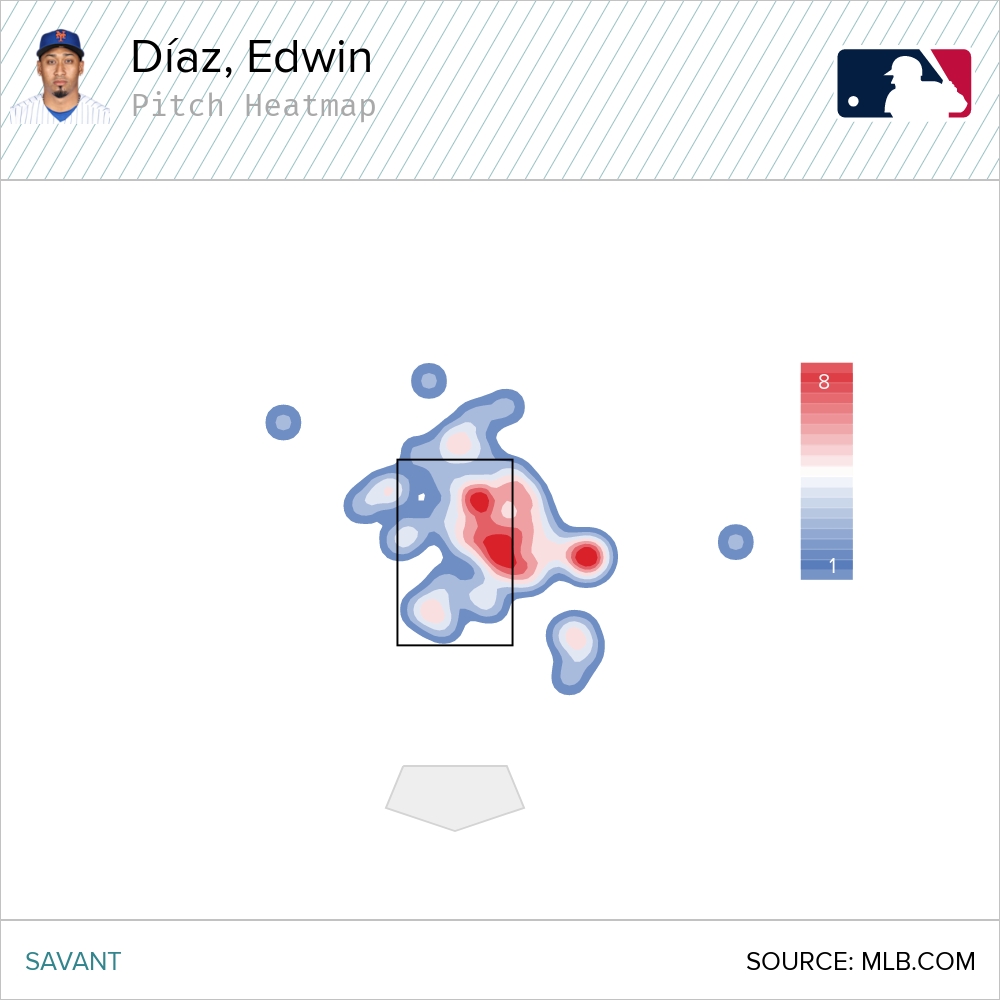The New York Mets have been in first place in the NL East throughout most of the season. In a division that looked like it could offer the best competition and best quality of baseball during the year, it has instead been one of the worst divisions in baseball. The Mets are in first place with an offense that was one of the best in 2020, to one of the worst in 2021. The Phillies bullpen issues continue to plague them, Atlanta is not healthy and its pitching staff has been a letdown while the Nationals had a fire sale at the deadline and the Marlins aren’t quite there yet. For a while there, in the darkness of it all, Edwin Díaz was having one of the best seasons by a reliever in baseball and helping the Mets lockdown wins and maintain their division lead. As that lead has dwindled, can Díaz help the Mets right the ship?
A Bump in the Road
Stop me if you’ve heard this one before, after the crackdown on foreign substances, a pitcher struggled. Crazy right! Almost like applying a ban on foreign substances that help pitchers grip the baseball in the middle of the season is a bad idea. But I digress, Edwin Díaz was not an exception to this rule. Diaz’s spin rates after the crackdown plummeted. Averaging a spin rate close to 2350 on his fastball before the crackdown, Diaz has only had one appearance where his fastball averaged more the 2300 RPMs since the ban. A noticeable drop. As one might imagine, Diaz’s command took a tumble as well. His walk rate has steadily climbed while his K% has taken a hit as well.
Díaz is a two pitcher and his main pitch had been considerably worse. His swinging-strike rate went down three percent while the SLG% against his fastball has jumped by about 100 points as well. Admittedly, it is a smaller sample size only focusing on about a month-long period and so a grand slam against the Pirates does weigh pretty heavily on this. Still, from June 21st through July 19th, Diaz had problems commanding the fastball and getting swings on it. His overall CSW on the pitch fell by five percent. His zone% fell by 10 points. He needed time to adjust and the loss of spin was very clearly affecting him. While his fastball has lost spin, Díaz’s slider was giving him some problems as well. Here is Díaz’s season heatmap for his slider, and a heatmap of his slider from June 21st to July 19th.


As you can see, his slider had been left over the middle of the plate too much. He still registered a 21% swinging strike rate on the pitch and wasn’t giving up hard contact with the pitch. Yet, his swinging strike rate dropped 7% on the pitch and he was throwing it almost 7% more of the time. He was relying on it more but couldn’t get the whiffs on it. It makes sense to throw it more when you can’t command the fastball and the slider is still moving well.
The Mets closer has also had some problems controlling the contact over this stretch. His hard-hit rate is around 27% this year but has been closer to 33% during that stretch. Of the 25 batted-ball events, eight of them have hard-hit and have gone four for eight in those situations. That all goes back to his command. Leaving more pitches in the middle of the plate with his slider and failing to get his fastball away from the middle of the plate as well. It was a long month for Díaz but it looks like he’s starting to turn it around.
Back on Track
After a rough month, Díaz appears to be back on the right track. His last five outings have been scoreless where he’s faced 18 hitters, struck out nine of them, walking two, and giving up two hits. That is the Edwin Díaz that we know can dominate hitters. You might be able to guess what is fueling his success.
The Mets’ closer spin rate has slowly risen back up towards a 2200 RPM rate. His swinging-strike rate has climbed to 15% and his CSW is at 31%. His usage rate is still down a little bit but his zone rate is back up towards 55%. He’s adjusted to being able to throw his fastball without any substances and is trying to throw as many strikes in the zone as he can. Here’s his heatmap from his last five appearances.

Trying to throw pitches into lefties and away from righties for the most part over this stretch. Again, this is a stretch of 18 plate appearances so it’s a minuscule sample size. These are still encouraging signs with his fastball. Throwing more strikes and getting more whiffs. It’s also helping his slider be better. Díaz has thrown his slider 41 times over his past 5 outings and has produced 15 whiffs on it. That’s good for a 35% swinging-strike rate. That’s going to play at any point and any moment.
What’s funny though is his xSLG is higher during this stretch than it was during the month-long stretch of inconsistent pitching. Does it matter? No, it’s likely just giving up some random hard contact and wouldn’t read too much into it. When it comes to power pitchers, the quality of contact may not be there but for Díaz, it has been all year. He’s in the top 2% of the hard-hit rate. He isn’t getting groundballs at the rate he was last year but if he’s starting to get the strikeouts he is right now, then you don’t care if the ball is hit on the ground or in the air.
To keep this up, Díaz needs to continue to throw as many strikes as possible. Yes, that sounds overly simplistic and I’m supposed to try and find the other details for why. Sometimes though, the simplest answer is the correct answer. Díaz’s problems were primarily coming from his lack of command and the spin issues. Throw as many strikes as possible especially when you throw 100 mph. I expect him to keep it up but the big number to keep an eye on moving forward is his zone% with his fastball. As long as that number is above 50%, then good things will continue to roll in Queens for their all-star closer.
Whatever the change was, a mechanical change, a grip change, or just needed some time off, this is the Edwin Díaz that the Mets are going to need for a stretch run into the playoffs.
Push to the Playoffs
If the Mets closer can continue to keep up these adjustments then that’ll be a big relief to the Mets pitching staff. The team has to pick up the pieces recently with an injury to the best pitcher on the planet, Jacob DeGrom. The Mets needed more help than what they got at the deadline. A pitching staff that is depleted and an offense that continues to fail to score is going to limit the chances for Díaz. One of the best closers in baseball may not be used much in the coming weeks if the Mets aren’t going to play well. So if you’re a fantasy manager rostering him, you’re completely reliant on the rest of his teammates playing better or see what you could get in return for him via a trade.
The good news is that the way he has pitched recently will make other teams interested in his services for fantasy baseball playoffs in dynasty leagues. For Mets fans though, this is a real problem, we have an elite closer that we aren’t using because our team can’t score. There’s nothing more frustrating for the fans to waste an elite talent in some form or another. Something Mets fans have experienced a lot the last few years.
(Photo by Brian Rothmuller/Icon Sportswire)
